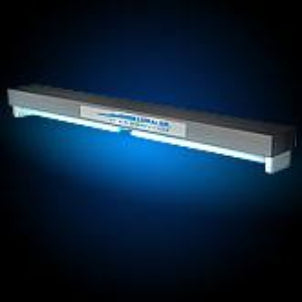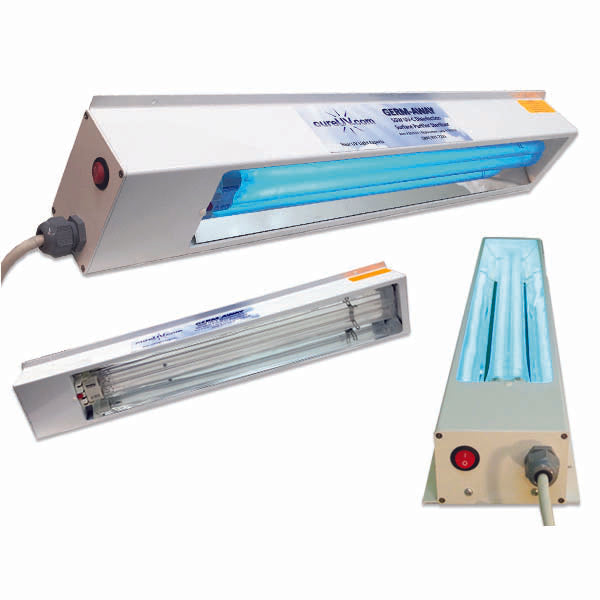Revealing the Benefits of UV Sanitation: Making Sure Disinfected and tidy Areas
While traditional cleansing techniques have long been relied upon, advancements in technology have actually presented an ingenious option that makes sure clean and sterilized areas: UV sanitation. Additionally, we will dig right into the security considerations that should be taken into account when implementing UV disinfection. Prepare to uncover a brand-new dimension of sanitation and find the untapped possibility of UV sanitation.

The Scientific Research Behind UV Sanitation
UV disinfection is a clinically tried and tested method that utilizes ultraviolet light to get rid of unsafe bacteria from surface areas and water. The science behind UV sanitation lies in the capability of UV-C light to harm the DNA and RNA of microbes, providing them not able to duplicate and causing their ultimate death. UV-C light falls within the wavelength series of 200 to 280 nanometers, which is highly effective in ruining germs, viruses, and other microorganisms.
When exposed to UV-C light, the hereditary product of bacteria soaks up the power from the light, bring about the formation of thymine dimers. These dimers interrupt the regular duplication and transcription processes of the microorganisms, hindering their capacity to survive and replicate (uv surface disinfection). The DNA and RNA damages brought on by UV-C light is dangerous to the microorganisms, making UV disinfection a trustworthy and efficient method for killing a wide variety of virus
UV sanitation is especially helpful in settings where conventional chemical disinfectants might be inadequate or unwise. It is a non-chemical approach that does not leave any type of deposits or damaging byproducts, making it secure for use in food handling, health care centers, water treatment plants, and various other sectors. Furthermore, UV disinfection is environmentally pleasant, as it does not add to the growth of antibiotic-resistant germs or various other unsafe contaminants.
Effectiveness of UV Disinfection on Pathogens
The effectiveness of UV disinfection in getting rid of pathogens has actually been thoroughly studied and shown in many clinical studies. UV radiation has the capacity to suspend a wide variety of bacteria, consisting of fungi, bacteria, and viruses, by harming their DNA or RNA. This prevents them from replicating and creating infections.
One research study published in the American Journal of Infection Control found that UV disinfection was reliable in reducing the existence of multiple drug-resistant bacteria in hospital spaces. Another research study carried out by the National Institute for Occupational Safety and security and Wellness showed that UV sanitation had the ability to eliminate 99.9% of the flu infection on surfaces.
UV disinfection has also shown pledge in combating the spread of healthcare-associated infections (HAIs) According to a research study published in The Lancet, using UV-C light along with conventional cleaning procedures dramatically reduced the incidence of HAIs in a healthcare facility setup.
Furthermore, UV disinfection has proven to be effective against emerging microorganisms, such as the serious acute respiratory disorder coronavirus 2 (SARS-CoV-2), which causes COVID-19. A study carried out by the National Arising Infectious Conditions Laboratories demonstrated that UV-C light can suspend the virus on surface areas within seconds.
Applications of UV Disinfection in Different Settings
With its proven efficiency in eliminating pathogens, UV sanitation has actually found applications in a selection of setups. UV disinfection is also advantageous in water therapy plants, where it is used to eliminate dangerous microorganisms and offer risk-free drinking water.
Another crucial application of UV sanitation is in the air filtration industry. UV air purifiers are used in household, business, and industrial setups to eliminate airborne bacteria, infections, and mold and mildew spores. This innovation is particularly beneficial in settings where individuals are extra at risk to respiratory infections, such as medical facilities, institutions, and office complex.
Moreover, UV disinfection is progressively being made use of in public transport systems, such as buses and trains, to preserve tidy and sterilized rooms for travelers. UV light is used to disinfect surface areas and air inside the lorries, reducing the danger of here are the findings spreading out contagious illness.
Advantages of UV Sanitation Over Conventional Techniques
In comparison to traditional methods, UV sanitation offers a variety of unique benefits that make it a better selection in different industries and settings. One substantial advantage is its performance against a large selection of microbes, including microorganisms, fungis, and infections. Unlike chemical anti-bacterials that may have restricted efficacy versus specific virus, UV disinfection is a non-selective procedure that can kill or suspend a wide spectrum of dangerous organisms.
One more advantage of UV sanitation is its capability to supply rapid and reliable disinfection. Standard sanitation approaches commonly need longer call times or multiple steps to attain the preferred level of sanitation. In comparison, UV light can provide instant and continual sanitation, lowering downtime and raising efficiency in different applications.
UV sanitation additionally provides a risk-free and ecologically friendly alternative to typical sanitation methods. uv surface disinfection. Unlike chemical agents, UV light does not leave any type of hazardous residues or spin-offs, making it ideal for usage in sensitive atmospheres such as food processing centers, health care settings, and water treatment plants
Furthermore, UV sanitation is a cost-efficient option in the long run. While the upfront financial investment for UV sanitation systems might be higher than typical methods, the functional costs are typically reduced. UV lamps have a long life-span and require minimal maintenance, leading to minimized labor and substitute costs.
Safety And Security Factors To Consider for UV Disinfection
Thinking about the prospective threats connected with UV sanitation, it is vital to address the safety factors to consider included in applying this modern technology. UV sanitation makes use of ultraviolet light to eliminate or suspend bacteria, making it an effective Check Out Your URL technique for sanitizing various surface areas and items. It is essential to comprehend that UV radiation can also pose threats to human wellness if appropriate safety and security actions are not complied with.
Most importantly, straight exposure to UV radiation can create injury to the skin and eyes. Extended exposure can lead to sunburn, skin damages, and even an increased risk of creating skin cancer. It is critical to guarantee that UV disinfection systems are effectively confined and geared up with security features such as automated shut-off systems or motion sensors to avoid unintentional exposure.

Additionally, correct training and education and learning are vital for those liable for running UV disinfection systems. They should be aware of the possible dangers, comprehend the safety protocols, and know how to manage and keep the equipment appropriately.
Verdict
Finally, UV disinfection offers various benefits in ensuring clean and disinfected areas. Its performance in getting rid of microorganisms has actually been confirmed with clinical research. UV disinfection can be applied in numerous setups, consisting of medical care centers, food handling plants, and water treatment systems. Contrasted to typical techniques, UV sanitation has benefits such as faster disinfection times, marginal chemical use, and no hazardous byproducts. Safety considerations have to be thought about to avoid possible dangers connected with UV direct exposure.
UV disinfection is a clinically proven method that utilizes ultraviolet light to get rid of damaging microorganisms from surface areas and water. The DNA and RNA damages triggered by UV-C light is deadly to the microorganisms, making UV disinfection a dependable and effective approach for eliminating a vast variety of pathogens.
One more advantage of UV sanitation is its capability to give navigate to this website rapid and effective sanitation. UV disinfection makes use of ultraviolet light to kill or inactivate bacteria, making it a reliable method for sterilizing different surface areas and objects. Compared to standard techniques, UV sanitation has benefits such as faster disinfection times, very little chemical use, and no damaging byproducts.
Comments on “UV Surface Disinfection Made Simple: Implementing Best Practices for Ideal Outcomes”